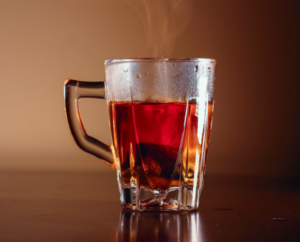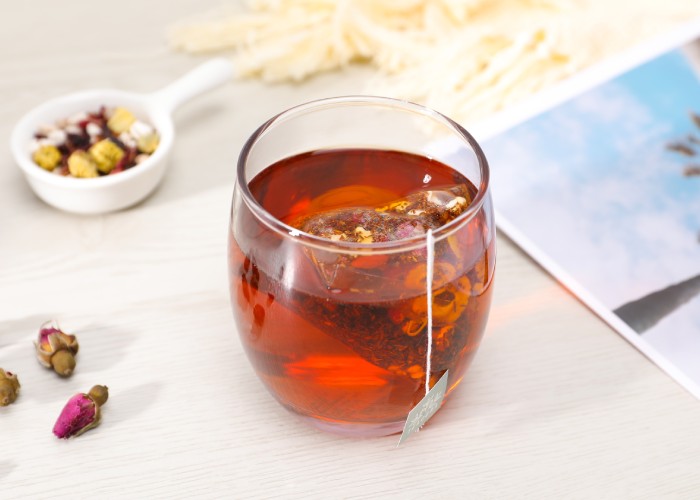This article “The rise of rooibos and why celebs like Catherine Zeta-Jones and Miranda Kerr love it” was written by Carmen Williams and published by Food24 on 3 January 2020.
The South African tea is known by many names, but it’s always the same flavour that’s a hit with the stars. Rooibos tea is truly a South African staple. It’s as South African as boerewors and chakalaka, Faf De Klerk in his speedo, or using the word ‘shame’ in reply to anything, good or bad.

Rooibos is a herbal tea consumed mostly in southern Africa, but over the years it has become known by many other names in many other countries (it’s called bush tea, red tea, or red bush tea in the UK) where it is a proudly SA export.
Which means we love when an international celeb professes their love for our home-grown tea. It’s just so lekker, man.
Famous people love rooibos:
Catherine Zeta-Jones and Michael Douglas reportedly had a special rooibos ice cream made for their wedding in 2000 because Catherine loves rooibos so much.
Anthony Hopkins and Angelina Jolie allegedly also use the tea to maintain their weight.
Cindy Crawford’s facialist uses rooibos tea products on the model’s skin, while lead singer of Duran Duran, Simon Le Bon, is said to have a cup of rooibos before every performance.
Model Miranda Kerr told Harper’s Bazaar that she’s “really into rooibos tea with goat’s milk and a little bit of honey.”
And there are many other celebrities who seemingly love a good cuppa rooibos or use it in their beauty regimens.
Where did rooibos tea come from?
There isn’t a clear consensus on just how exactly we got to start drinking rooibos tea, but the stories do seem to overlap at certain points. According to rooibos industry, it seems to have all started back in the 1650s, when the Dutch East India Company created a ‘refreshment station’ in the Cape of Good Hope for sailors who worked on the trade routes between Europe and Asia. These sailors brought the tradition of tea-drinking with them, and some of the first settlers realised they could enhance the expensive Chinese tea with the needle-like Aspalathus linearis plant found in the Cederberg area – and so, rooibos was first created.
The Rooibos Council says early Dutch settlers drank it as an alternative to the expensive black tea from Europe, and European botanist Carl Thunberg reported on the rooibos plant when he visited the Cape in 1772. Then in 1904, a Russian immigrant named Benjamin Ginsberg began trading the tea, making him its first exporter. More than half a century later, Annique Theron highlighted its health benefits in her beauty and health products and it became increasingly popular.
But Joekels Tea credits the Khoisan as the original discoverers of the plant, which they used to treat the sick. They do also give credit to Thunberg (but his surname here is Humberg) for making it more popular in 1772, and that Ginsberg did indeed market it to local farmers. Many of Ginsberg’s methods are still used to this day, although they are now mechanised.
Why is rooibos so popular?
Well, we all know it’s delicious, but there are many benefits to drinking the tea (that isn’t strictly a tea):
- It contains no caffeine, but is comforting as a warm beverage, so it’s great for pregnant women or those who are averse to caffeine.
- It’s low in tannins, which are naturally occurring compounds that could interfere with the body’s way of absorbing iron.
- It contains lots of antioxidants, which are great for your body and skin.
- It seems to improve heart health.
- It’s calorie-free and could help you with weight loss.
- It could help you zap a few wrinkles.
With all these benefits, who wouldn’t want to be drinking rooibos every day? In fact, it’s recommended that you have six cups of rooibos tea throughout the day to really get its benefits. While we’re not quite sure we’re that dedicated to rooibos (that’s a lot of tea), we are very happy to know that this proudly SA export is so popular among the rich and famous.
Now, let’s put the kettle on.

